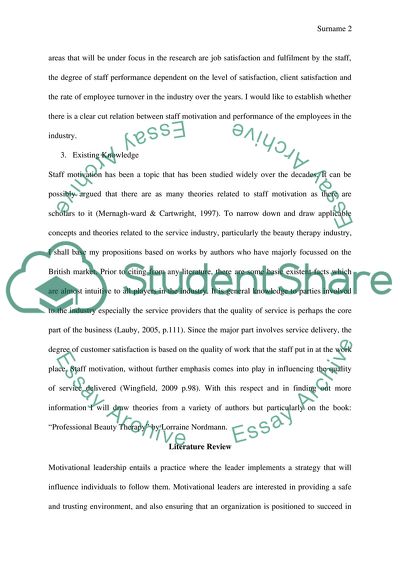Cite this document
(Investigation into Staff Motivation in Beauty Therapy Industry Research Proposal, n.d.)
Investigation into Staff Motivation in Beauty Therapy Industry Research Proposal. Retrieved from https://studentshare.org/human-resources/1833918-research-methods-investigate-into-staff-motivation-in-beauty-therapy-industry
Investigation into Staff Motivation in Beauty Therapy Industry Research Proposal. Retrieved from https://studentshare.org/human-resources/1833918-research-methods-investigate-into-staff-motivation-in-beauty-therapy-industry
(Investigation into Staff Motivation in Beauty Therapy Industry Research Proposal)
Investigation into Staff Motivation in Beauty Therapy Industry Research Proposal. https://studentshare.org/human-resources/1833918-research-methods-investigate-into-staff-motivation-in-beauty-therapy-industry.
Investigation into Staff Motivation in Beauty Therapy Industry Research Proposal. https://studentshare.org/human-resources/1833918-research-methods-investigate-into-staff-motivation-in-beauty-therapy-industry.
“Investigation into Staff Motivation in Beauty Therapy Industry Research Proposal”, n.d. https://studentshare.org/human-resources/1833918-research-methods-investigate-into-staff-motivation-in-beauty-therapy-industry.


